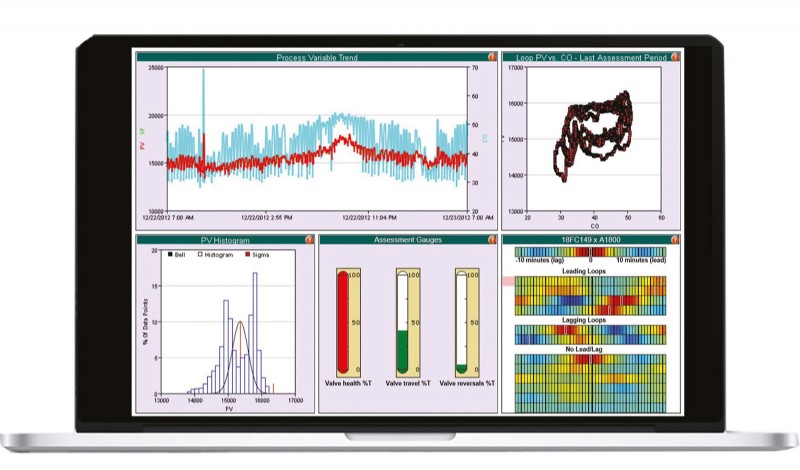What is Valve Performance Management?

Tools take Big Data Analytics and make it useful information
Today, valves and positioners can tell you exactly what is happening, and what problems they are facing.
The slightest problem can cause major process upsets. Unfortunately, many plants do not have the time, people, or procedures to review this information and determine appropriate plans to resolve the issues.
Valve Performance Management starts by gathering all available data from the valve, positioner, and control system.
This is a rich set of data including everything from the compressed air pressure, to the commanded valve position, position feedback error, and the process effects of valve movement.
However, in its raw form, this data is not terribly useful, and actually a bit overwhelming. Perhaps this is why, historically, less than 1% of data is actually analyzed.
To correct this situation, modern software tools can apply Big Data Analytics to the raw information.
This automated analysis develops specific diagnostics of the issues, such excessive movement, sizing, stiction, leakage and configuration issues. Criticality analysis and economic factors are also applied to establish clear priorities for attention.
Expert personnel, armed with this details and prioritized information, can now deliver very specific action plans to resolve the issues. Addressing these issues quickly prevents unplanned downtime and production losses. The focus is on the maintenance of the valves in need, and on ensuring that valves will perform properly until the next planned shutdown.
Depending on the size of the control valve, its lifecycle costs are roughly equal to the costs of a mid-value automobile. The total cost of ownership breaks down as: 9% engineering, 12% valve price, 5% spare parts and a whopping 74% allocated to operation and maintenance. As with any large investment, you need to manage it to get the full value.
Valve Performance Management is a structured approach to minimize the total cost of ownership (TCO) for the valve over its full lifecycle. Through on-site or remote monitoring, these steps are continually repeated to ensure that new issues are immediately addressed, keeping the valve fleet - and the plant - at peak performance.
To learn more about Metso’s Valve Performance Management read more at https://tinyurl.com/y29ugt96
Tel: 01256 639 750
Email: uk.sales@metso.com
Web: www.metso.com
Published: 8th November 2019
Rachel Wormald, Managing Director at YPS Valves Ltd and Elizabeth Waterman, ...
Are you looking for industry-leading, brand independent valve and actuator ...
As can be seen from the photograph, clearly the resident birds at Bartlett ...
Howco Group has unveiled its latest £1million investment, with the ...
In 2024, Allvalves is poised for an exciting year of growth and expansion, ...
GMM Pfaudler Engineered Plastics & Gaskets are delighted to bring the ...
In the ever-evolving valve industry, GMM Pfaudler stands out for its ...
SAMSON Controls Ltd – part of the SAMSON group - a renowned leader in ...










